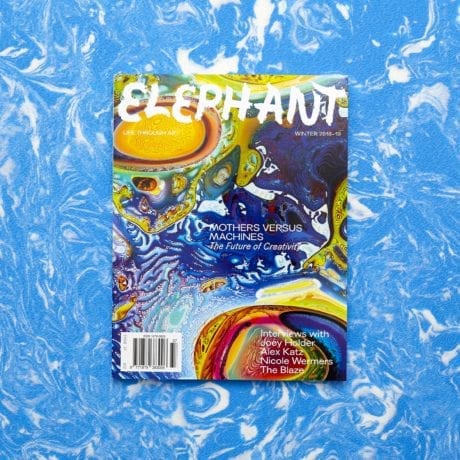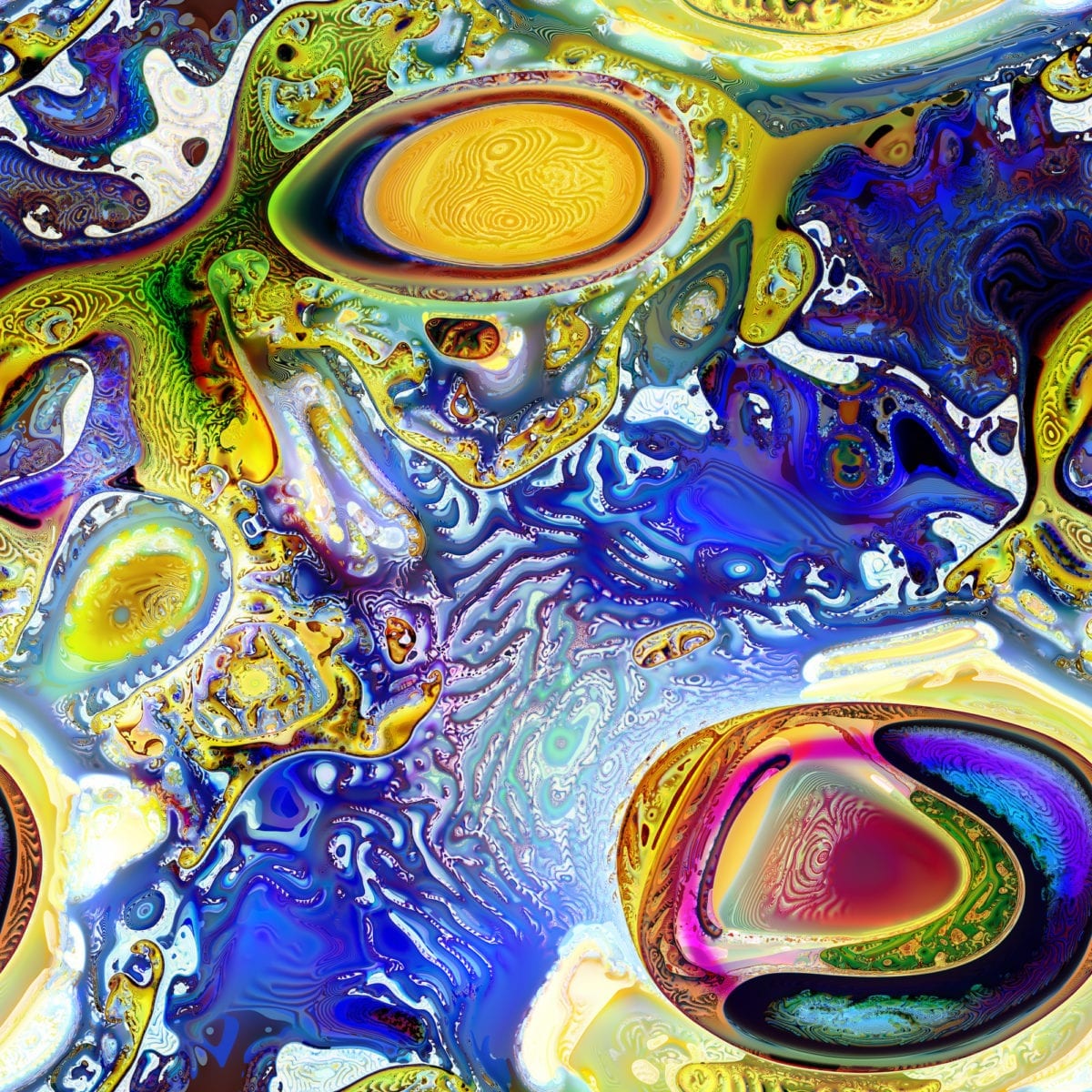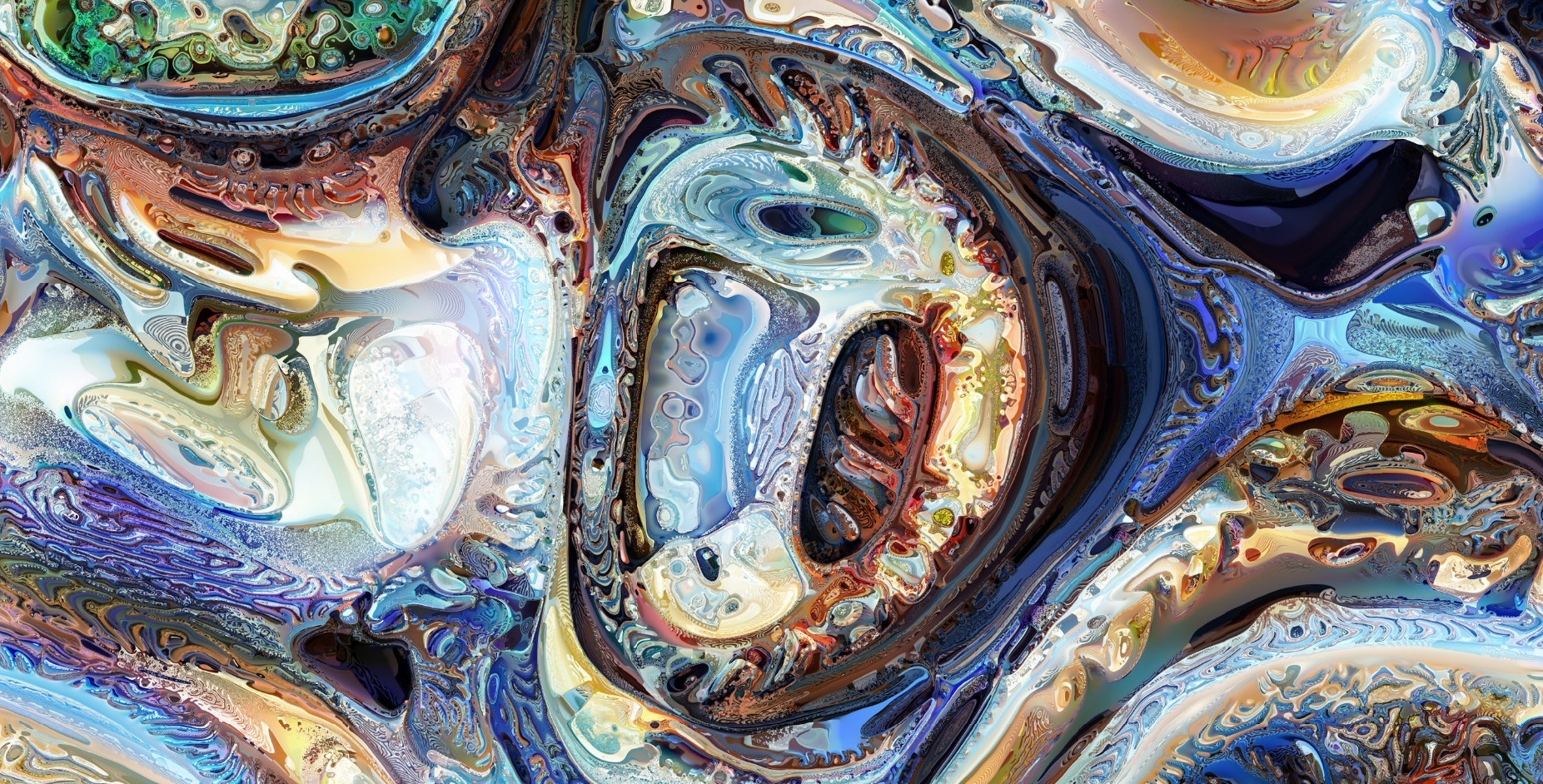
What is your background, and how did you first become interested in making art?
My first interest was science—in explanations of why things are the way they are, and how they came about. I was interested in chemistry. I would mix up various substances and see what resulted. My current computer art is a continuation of this tendency to want to set things up and see how they develop by themselves. My high school had a single Apple II computer; I wrote some simple programmes on it which drew lines on the screen like string art, and I was inordinately pleased with the results. Later on I became very interested in screenprinting, which really influenced my sense of colour.
Art and culture are often viewed independently from technology and science, while in your work you merge the two. How has this perceived separation impacted on your work, and how do you resolve the two?
I am using techniques from computer simulation and computer modelling and calling the results art. If you look at the departments in an art school—ceramics, woodwork, gold and silversmithing, glass etc—you will see that they are based on technologies we have had for a long time. I like to think that all technologies end up being art school departments. Even painting is completely dependent on an advanced materials technology, with chemistry to produce the pigments and the binders.
- Jonathon McCabe, Multi-Scale Belousov-Zhabotinsky Reaction Number Seven, 2018. Courtesy of the artist
Who are some of the people and projects that have influenced you?
Karl Sims’s papers “Artificial Evolution for Computer Graphics” continue to be a major influence, as does Stephen Wolfram’s popularization of cellular automata and Benoit Mandelbrot’s work on fractals.
When you are working with digital programmes, how much can you predict and plan in advance, and how much do you choose to leave to chance?
The process is completely described and determined by the computer programme, but I usually let the initial state be chosen by the programme using a pseudo-random number generator. Digital computers never really do anything by chance or randomly (unless they are broken), but they can pick up information from the environment (for example, the time at which a key is pressed on the keyboard) and feed that information into a chaotic programme (the pseudo-random number generator) whose output appears to be random and without pattern.
“I find that explanations of how the universe developed seem to be becoming more like biological explanations in recent times”
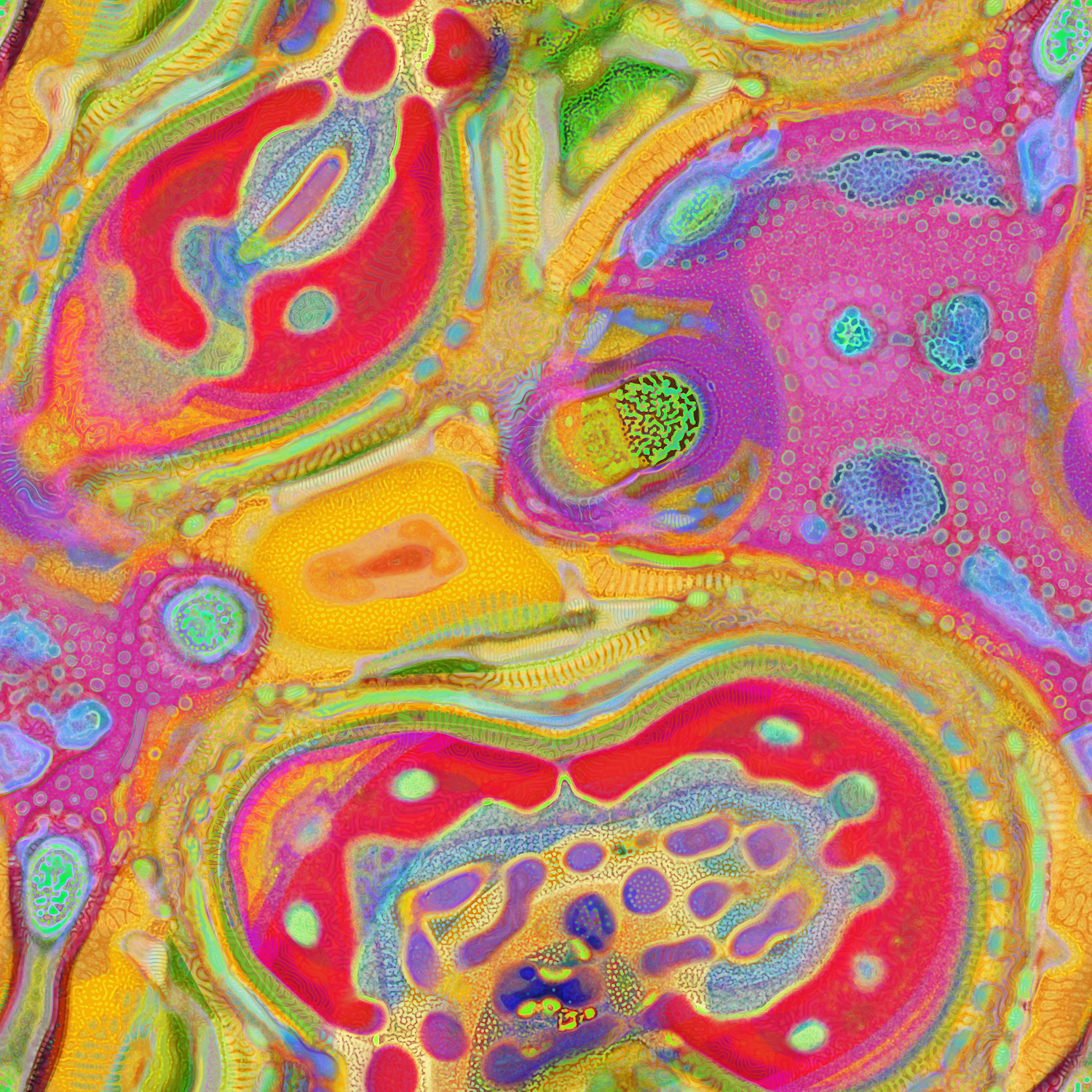
You work with algorithms first developed by mathematician Alan Turing. What appeals to you about his work and the specific research he developed for these programmes?
The spontaneous appearance of structure and order from the tiniest fluctuations in the theoretical process described by Turing intrigues me. He was trying to find an explanation of how patterns arise in the development of living creatures. For example, we are basically sphere-shaped at a very early stage of development. We are not spheres now, so how does that highly symmetric shape smoothly differentiate into the bilateral and highly structured shape we have? He showed that a biologically plausible system of substances that diffuse and react with each other could be unstable to the smallest perturbations or “noise” in the system, and cause spontaneous symmetry breaking to result in a patterned structure of lower symmetry.
The biological, cellular nature of your images can be seen to connect with birth, life cycles and biological development. Could you expand on this connection?
Most of my work is based on processes derived from explanations of biological development. I find that explanations of how the universe developed seem to be becoming more like biological explanations in recent times. For example, the Big Bang and the explanation of how the observable universe has developed from a tiny symmetric smooth region of space to the variegated structure we see now has similarities to how an embryo develops.
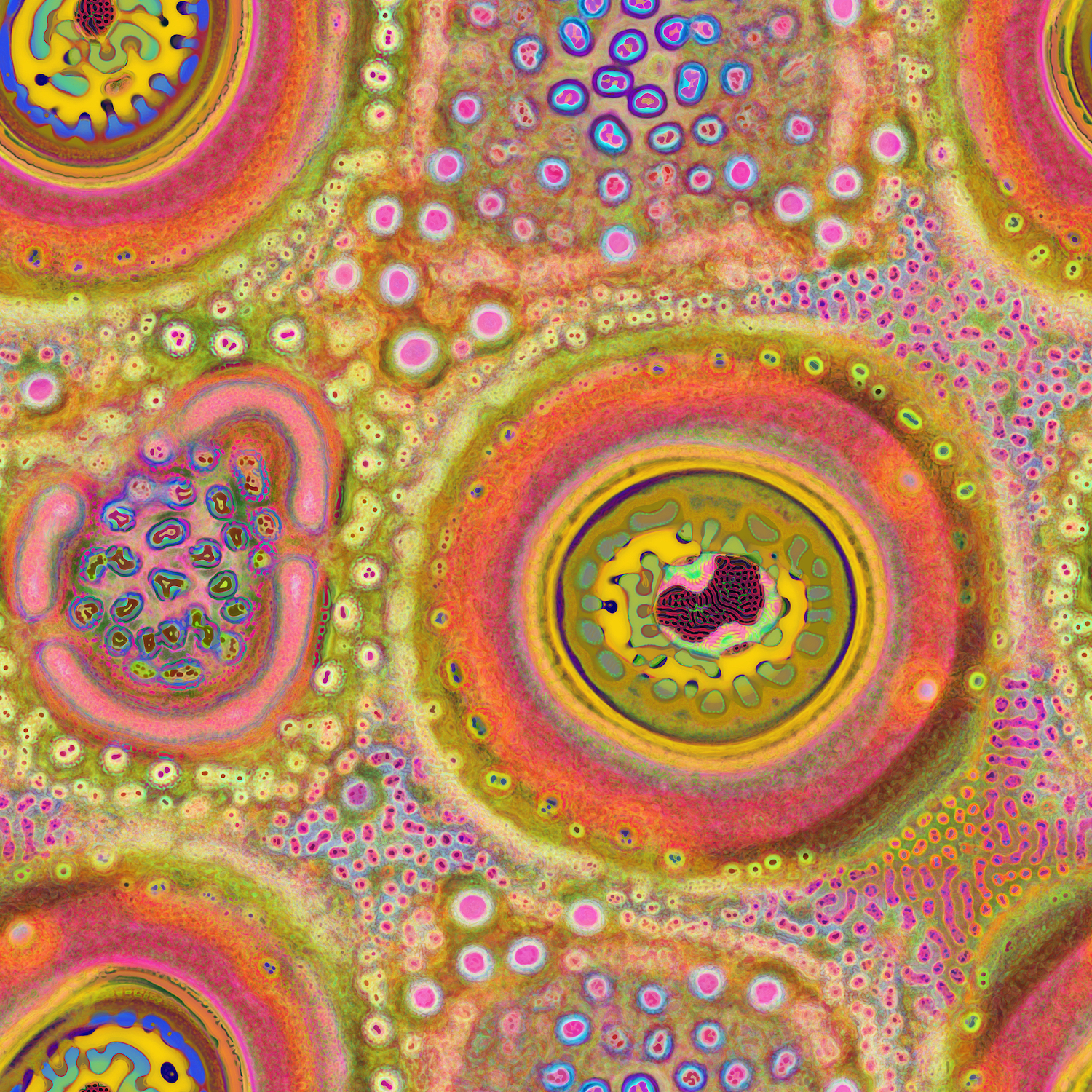
The colours that you use are often quite psychedelic. What draws you to these types of tones, patterns and colours?
I recall that I coloured in pictures with rainbows as a young child. I seem to be very attracted to strong colour gradations. My programmes are usually writing out colour values in RGB colour space, interpreting three numbers per pixel as colours (a very direct mapping). This tends to result in strong primary and secondary colours.
What is your view on your role as creator in regards to the chance elements of your work? Who is really in control here?
I see myself as a meta-creator in terms of generative art. I set up a process which is the “creator” of the image. I don’t directly specify which colours go where; the pixels communicate with each other and collectively come to a decision about what colour they should be. It is a mixture of strict determinism, with the programme being an exact specification of how that should happen, and chance, with the initial state of the pixels being random.
This feature originally appeared in issue 37
BUY ISSUE 37